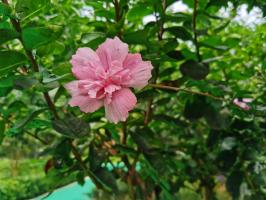What Type of Wetland Has Woody Plants and Tall Trees
Wetlands are natural habitats consisting of a water body, marshes, and swamps. These areas support various plant and animal species and play a vital role in the ecosystem. One type of wetland that features woody plants and tall trees is called a forested wetland.
What Is a Forested Wetland?
A forested wetland is a type of wetland found in areas with high water tables or frequent flooding, and it is dominated by trees and woody plants. It is sometimes referred to as a swamp forest or a wetland forest. Typically, these wetlands feature hardwood trees such as oak, maple, or elm, along with other woody vegetation such as shrubs and vines.
Characteristics of Forested Wetlands
Forested wetlands are characterized by the presence of woody vegetation and trees that can thrive in waterlogged soil. The trees in a forested wetland create a canopy that provides shade and cover for other living organisms. These wetlands are often associated with riverbanks or floodplains where water is abundant, and the soil is relatively nutrient-rich. Forested wetlands are crucial for mitigating the impact of flooding by slowing down and absorbing excess water.
The Importance of Forested Wetlands
Forested wetlands play a crucial role in supporting biodiversity by providing habitats for a variety of plant and animal species. The wetland's rich soil and constant water supply allow trees and other vegetation to thrive, providing food and shelter for various organisms. Additionally, forested wetlands contribute to the overall health of the ecosystem by reducing the amount of pollutants that can enter nearby waterways. They serve as important natural filters, absorbing excess nutrients and chemicals before they reach downstream water sources.
Threats to Forested Wetlands
Forested wetlands face numerous threats, including human activities such as deforestation, agriculture, and urbanization. These activities can result in the alteration of the water regime, reduced soil fertility, and the loss of habitat for various plant and animal species. Additionally, forested wetlands are at risk of destruction from natural disasters such as floods and hurricanes, which can lead to erosion and sedimentation.
Conservation Efforts for Forested Wetlands
Conservation efforts for forested wetlands vary by region, but they generally focus on preserving the wetland's habitat and restoring its natural functions. Restoration efforts may involve the removal of invasive species, planting of native vegetation, and the creation of buffer zones to protect the wetland from human activities. Additionally, conservationists work to promote awareness of the importance of wetland ecosystems and their role in supporting biodiversity.
Conclusion
Forested wetlands are an essential component of the ecosystem, providing habitats for various plant and animal species and serving as natural filters that improve water quality. These wetlands are under threat from various human activities and natural disasters. Conservation efforts are crucial for preserving and restoring these vital habitats to protect the delicate balance of the ecosystem.

 how many times do yo...
how many times do yo... how many planted tre...
how many planted tre... how many pine trees ...
how many pine trees ... how many pecan trees...
how many pecan trees... how many plants comp...
how many plants comp... how many plants can ...
how many plants can ... how many plants and ...
how many plants and ... how many pepper plan...
how many pepper plan...






























